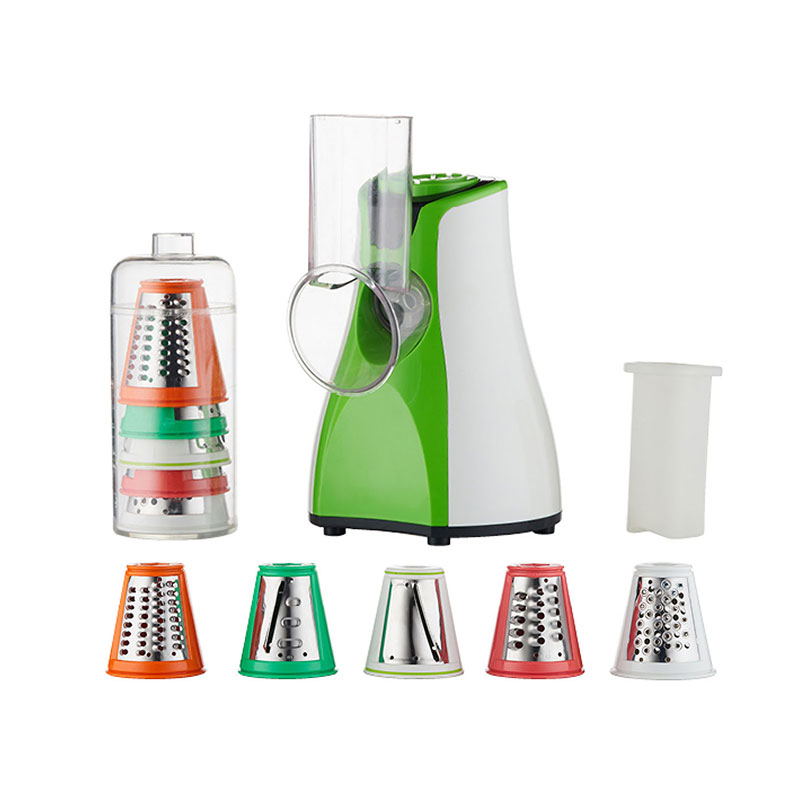The materials commonly used for blades and discs in a 3-in-1 food processor can significantly impact the appliance's performance and durability. Here are some common materials used and their effects on performance:
1.Stainless Steel:
Durability: Stainless steel is renowned for its exceptional durability and resistance to corrosion. Blades and discs made of stainless steel can withstand the rigors of food processing over time, making them an excellent choice for long-term use in a 3-in-1 food processor.
Sharpness: Stainless steel blades and discs maintain their sharp cutting edges, ensuring consistent and efficient performance. This sharpness is particularly valuable when processing a wide variety of ingredients, from soft fruits to tough vegetables.
Versatility: Stainless steel components can handle a broad spectrum of tasks, including chopping, slicing, and shredding hard and fibrous foods. This versatility makes them ideal for a range of culinary applications.
Maintenance: Stainless steel is relatively easy to clean and maintain. It is resistant to staining and odors, allowing for hassle-free cleanup after each use.
2.Plastic:
Cost-Effectiveness: Plastic blades and discs are often used in budget-friendly 3-in-1 food processors due to their cost-effectiveness. However, their lower cost is typically reflected in reduced durability and longevity.
Suitability: Plastic components are suitable for processing softer ingredients but may wear out faster when used on harder or denser foods. It's essential to consider the intended use and potential limitations when opting for plastic blades and discs.
3.Titanium-Coated Blades:
Enhanced Durability: Titanium-coated blades and discs are a premium feature that offers enhanced durability compared to standard stainless steel. The titanium coating provides an extra layer of protection against wear and tear, extending the lifespan of the components.
Sharpness Maintenance: The titanium coating helps maintain the sharpness of the cutting surfaces for an extended period, ensuring consistent and efficient performance. This is particularly beneficial when tackling tough or dense ingredients.
4.Multi-material Blades:
Balanced Performance: Food processors that use a combination of materials, such as stainless steel and plastic, aim to strike a balance between durability and cost-effectiveness. These components can provide adequate performance for a range of tasks while keeping costs in check.
5.Ceramic Blades:
Exceptional Sharpness: Ceramic blades are renowned for their exceptional sharpness, making them ideal for precise cutting tasks. They don't transfer flavors or odors between ingredients.
Fragility: While ceramic is incredibly sharp, it is also more fragile than stainless steel. Careful handling is necessary to prevent chipping or breakage, which can occur if the processor is subjected to impacts or misuse.
The choice of materials for blades and discs affects the overall performance in several ways:
Durability: Stainless steel and titanium-coated blades tend to be more durable and long-lasting, making them suitable for heavy-duty tasks.
Sharpness: Stainless steel and titanium blades remain sharp for extended periods, ensuring consistent and efficient cutting performance.
Versatility: Stainless steel blades and discs can handle a wide range of ingredients, including hard vegetables, fruits, nuts, and meats, making the food processor more versatile.
Maintenance: Stainless steel and ceramic blades are often easier to clean and maintain compared to plastic blades, which may be prone to staining and odors.


A multifunctional electric drum slicer is a kitchen appliance that is used to slice or shred a variety of foods such as fruits, vegetables, nuts, and cheese.


 English
English 中文简体
中文简体 English
English 中文简体
中文简体












